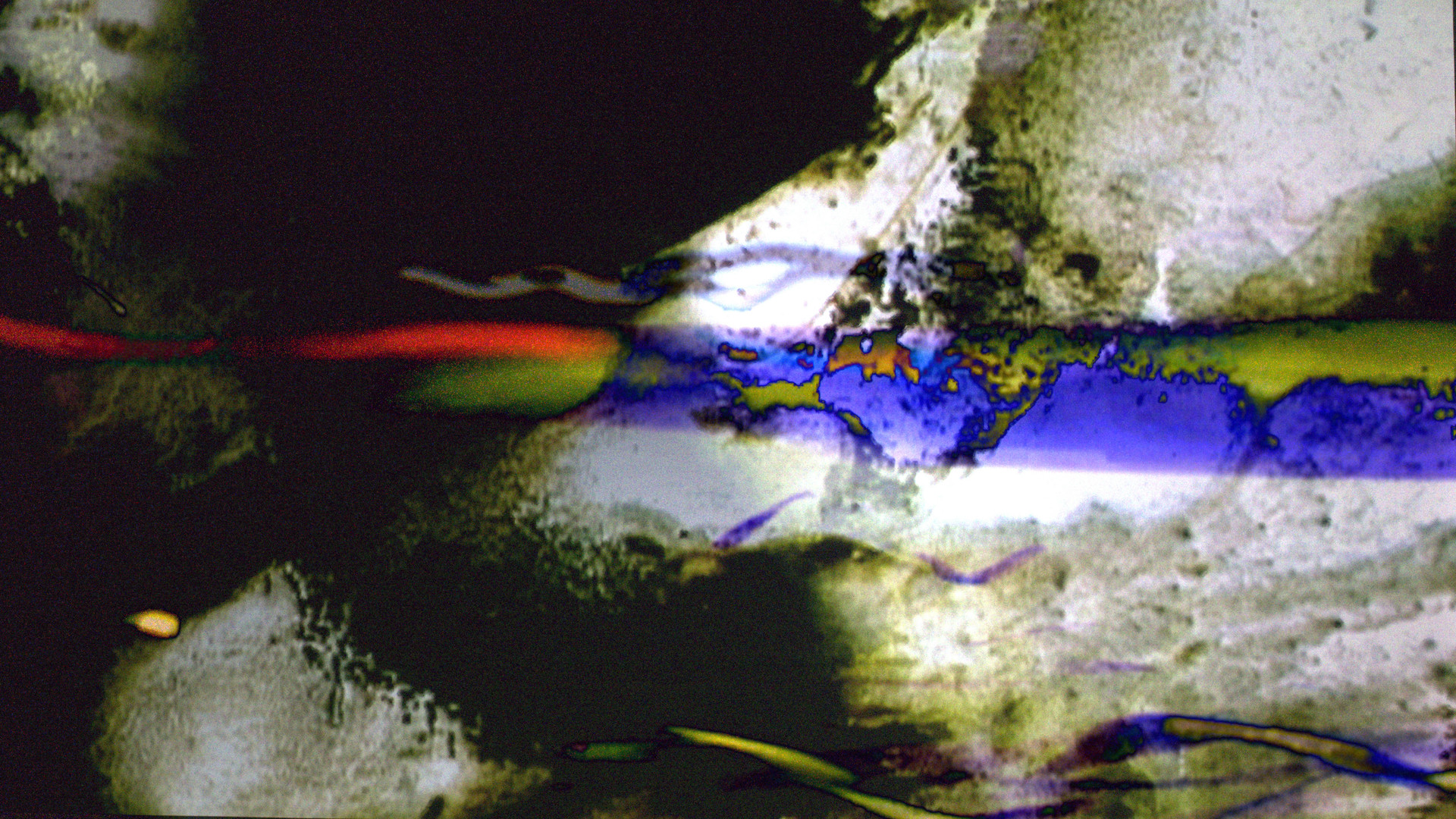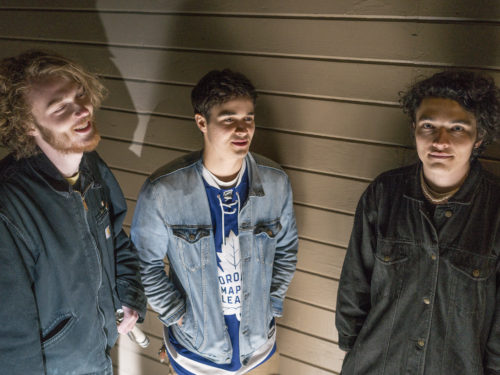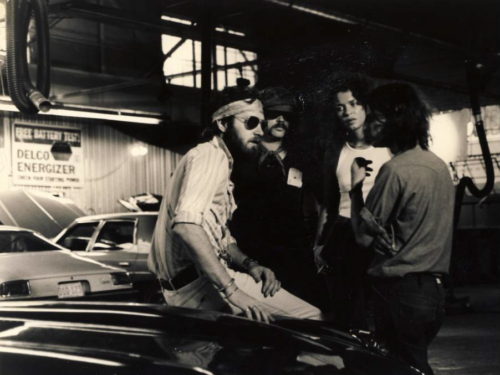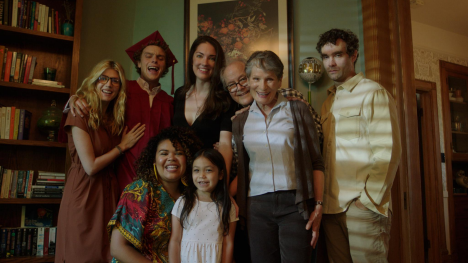To preview the 2021 Flickers’ Rhode Island International Film Festival, Robert Delany discussed some of the most exciting films with their creators. Today KWA talks about the 3D style he developed for Panta Rhei
One of the standout experimental films of the 2021 Rhode Island International Film Festival, Panta Rhei (everything is in flux) (USA, 2021) is an abstract, non-narrative film that guides viewers through an unconventional cinematic experience. Director KWA describes the film as a “white water ride” where abstract motifs transform furiously on screen. Created from hundreds of hours of footage, this whirlpool of metamorphosis is meant to embody the ever-changing world around us through a language of color and motion.
KWA aims to push the boundaries of abstract filmmaking through a 3D technology he developed called “Spectrum Vision” that alters how viewers see the color spectrum on screen. Inspired by the work of filmmakers like Stan Brakhage, KWA hopes to draw audiences into a reflection of the fundamental aspects of cinema. Panta Rhei is available in 2D and 3D.
KWA is currently screening his work during a five-year residency at the Murphy Art Center in Indianapolis, Indiana. We spoke about the roots of abstract filmmaking, how the technology of filmmaking has changed over the years, and the excitement of pure cinema.
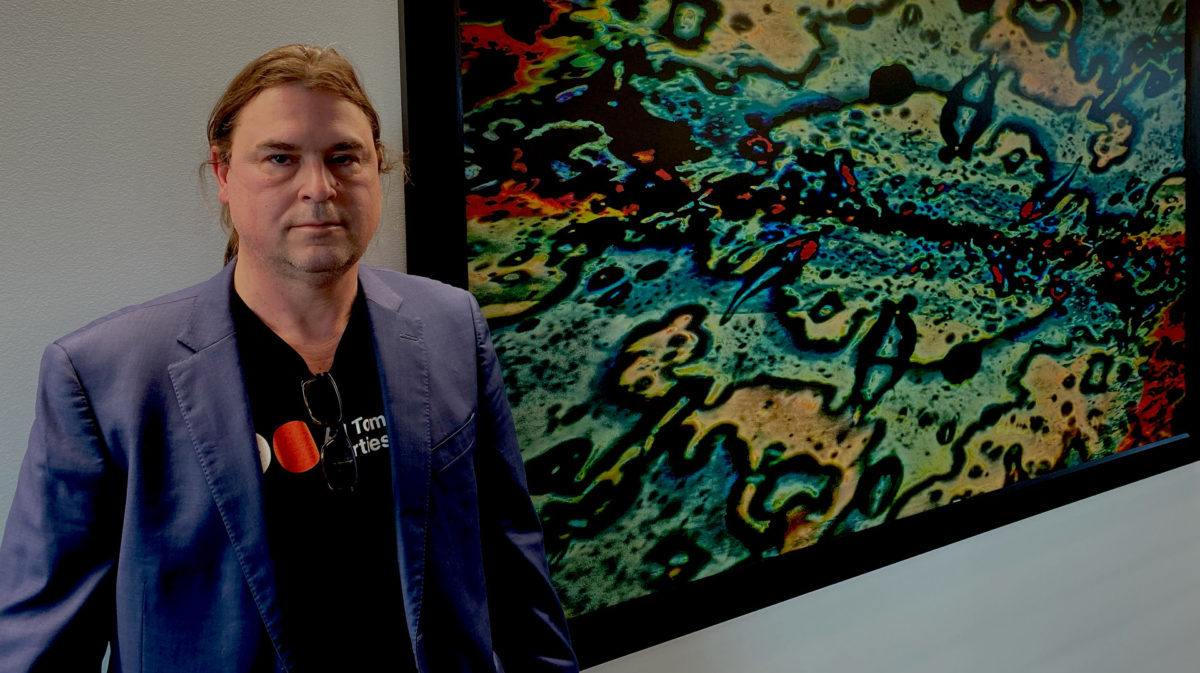
Split Tooth Media: You specialize in a unique type of 3D filmmaking that you call “Spectrum Vision.” What is Spectrum Vision and how does it differ from traditional 3D filmmaking technique?
KWA: There are many many types of 3D. A very short review of that: You’ve got your anaglyphs, where you’ve got cyan and red, which are typically used with black and white films like King Kong or Godzilla in 3D. They are separating the red and the blue out of the black and white and that’s why it doesn’t look quite white because they’re pulling those colors out, unless you have the glasses on. Then you’ve got polarized, which are basically sunglasses. Then there’s linear, and circular, and different types of that. Ultimately, I wanted to do something that’s more immersive.
So what I came up with, it’s basically a color depth. It’s like a prism on your eye and when you look through it, like right now I’m looking at a print behind me, these reds come out and the blues go way back and then it’s ROYGBIV in between. So it’s separating the entire color spectrum in a way that presents it in that order, which I find very compelling, and I think a lot of other people do as well.
In your description of Panta Rhei you say that it is “a place where each audience member’s perceptions are the star of the show.” Why encourage this type of active viewing from your audience?
There are many reasons for this, but ultimately they should be the star of the show — they’re paying! From my side, I see that as my focus. It doesn’t matter whether there’s people in this film or words or a script. What matters is it’s impact on the audience, their experience. And they should have a breadth of experience. We shouldn’t be regimenting them into, “Hey I’ve got this great story for you.” Everything’s a story. That kind of gets in the way of your own voice. As you guys were talking about in the Stan Brakhage podcast, there’s a part of you that experiences all of this stuff and the words part of it really cuts it down to the bone where if you can’t put a word on it then it doesn’t exist. That’s just not reality. When I say their perceptions are the star, they always are number one, but they don’t know that because they think the guy on the screen is the star. No. You’re the star. This is about you and how you see things.
Related: RIIFF 2021 Q&A: Emmanuel Fraisse’s ÆON (2021)
In your bio you describe yourself as an “American Auteur,” but the way that you are putting an audience’s perception so front and center in Panta Rhei seems to go against a popular understanding of an Auteur’s control over the experience of their work. Do you find that your approach differs from traditional notions of auteurism?
The reason the term auteur is attractive to me is because if we look at some of the preeminent Auteurs, let’s say Robert Bresson, Bresson sets a series of rules for his films. For example, no [professional] actors, very interesting because film, cinema, is not theater — it’s something else. The Auteur piece maps to me in the sense that I’m setting some preliminary rules of the road. No people, no places, no voices; Infinite choices of how to see.
Those are the three eminent auteurish elements I would say that I’m working on.
The other one is that I’m trying to create this feedback loop in the mind so you can better analyze what’s going on. With that I feel like the artists themselves should be creating these rules in a way that reflects that. When I think of feedback, we could go to the Nam June [Paik] and the video feedback. That idea is really great because the thing you’re seeing is coming back to you as it’s going in. From my side I see it as, at its most rudimentary level, what is cinema? Cinema is light being projected out on a screen. So if I want to create a feedback loop, what I’m putting on the screen and recording has to be light.
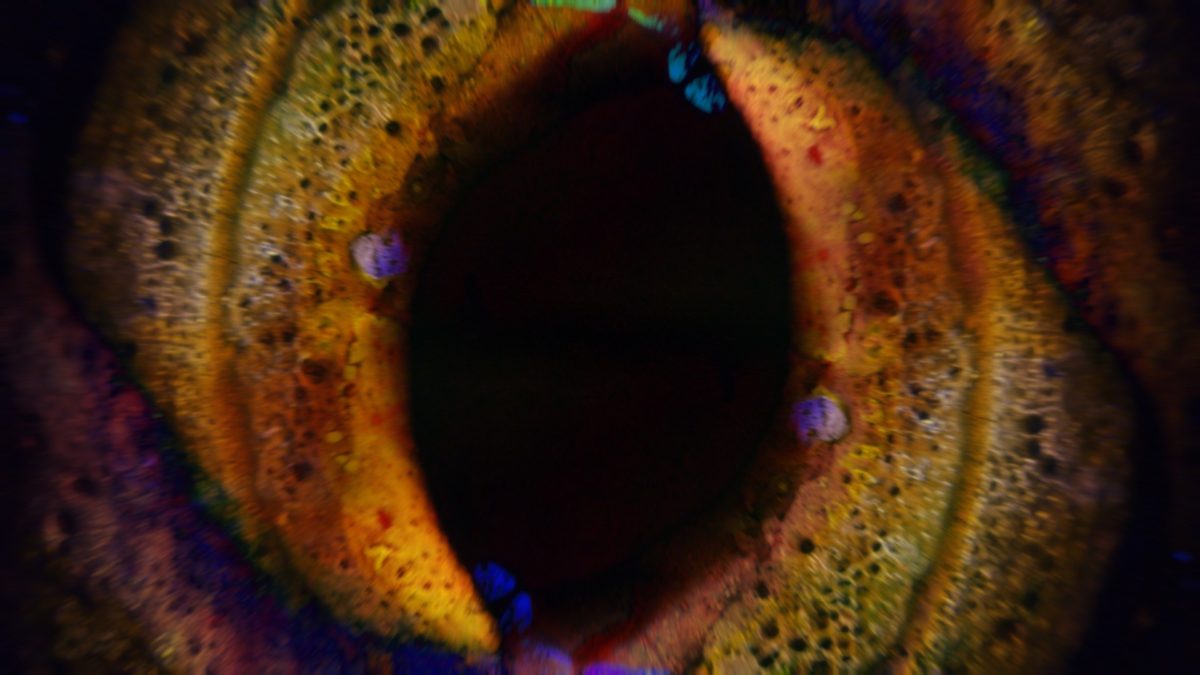
One of the core aspects of this film is the idea that life is in a constant state of flux. How did you want to communicate this idea through the actual form of the film?
Panta Rhei, the philosophy of life as flow, is attributed to Heraclitus, a pre-Socratic philosopher. One of the things that comes out of that is no one walks into the same river twice. The river’s always flowing. So you can’t walk into the same river, and the person is always changing. I’m trying to create this situation where we have this continuous change in ourselves.
We kind of have that in Grecian history with the trivium. The triangle with grammar, logic, and rhetoric. I feel like that’s not enough. So what I’m trying to do is create another trivium to go with that. A trilogy [of films]. The first one is called The Space Between (stimulus and response). The concept in that film is to create more of a window when we receive information or stimulus of any kind. We’ve got this brief window of time to make rational decisions about everything that happens next. However we respond to something, there are a cascade of events that happen based on that response that then emanate out, like popping a pebble in a pond, the ripples go out. We don’t think of it that way. We more or less just react. If you stop and think about the next waves of the pebble, you can put yourself in a much stronger position to have the outcome you want.
The second one is Panta Rhei (everything is flux). We are looking at life like a static thing. We have to attempt to make something to help people recognize life as a flow that is always changing.
The third will be Metanoia, which is a penitent turning. Think about the space between stimulus and response, look at life as a flow and constant flux, place yourself into its stream that’s most advantageous to you. Look at what you did and reflect on that and turn back. That’s why the audience is the star because it’s all about the people who are there watching it and having an environment for them to just do that. A story can’t do that. Look at the concept, watch it, give it a chance, and see if that helps you recognize that.
Related: RIIFF 2021 Q&A: Catherine Slilaty’s Moundform (2020)
Did you have an idea of the motifs you were looking to create, or was your approach more improvised?
A lot of what we are trying to do here is to dive into the subconscious. That’s where most of this stuff is getting in our way. We always have this voice in our head, and we have an unspoken voice in our head. Kind of like the conscience, like old cartoons with the devil and the angel but there’s a lot of them. There’s a lot of dark things in there. Things that are primordial that go back to our DNA, like how we relate to colors. Everything like that has that type of an element.
So ultimately my process has to be one where I have to be getting in that state as well. If you want to get into that subconscious state you are not going to be able to plot much, right? What you can do is set that up ahead of time with your rules and your tools, and then put yourself in that state, or try to, and then start doing that. Mostly it’s a matter of what I call happy accidents. Then I interpret those accidents. So with eight minutes and 46 seconds, I probably have a couple hundred hours of film that I went through to make that. Then we do quite a bit of compositing.
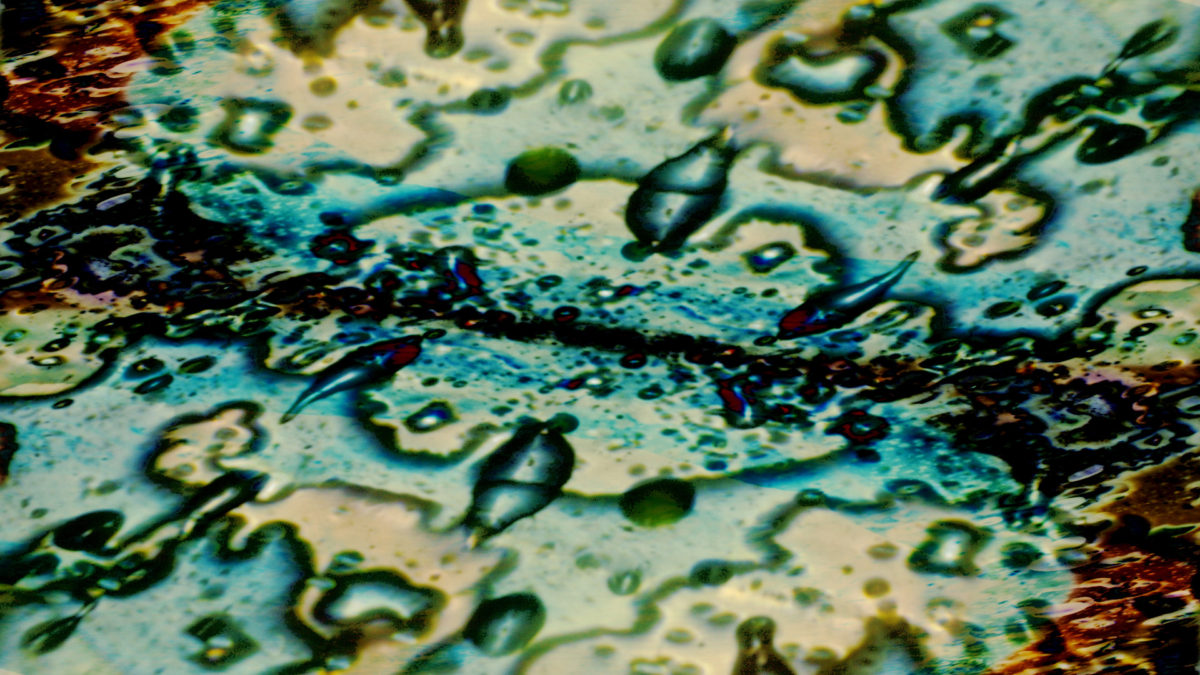
The color design is wide ranging in Panta Rhei, but it seems to be viewed through a filter that darkens the hue. Why present the color in this way?
I’m going on feeling with the color. There is science on this color, it’s called color theory. Most of the science is based around commercial products. Really there is a primordial thing across all cultures. When certain facial expressions mean the same thing across all cultures, when certain things of that nature are common throughout the world. There’s a communication that occurs with red, with blue, with yellow, and then certain hues in between. I’m wearing the 3D glasses all the time, so I’m adjusting the colors in a way that maps to both experiences, 2D and 3D. I want the separation of the colors in the spectrum with the Spectrum Vision. Having red in the middle at times with some blue in there too kind of delivers that. Ultimately, that tone of red that you see, I have an ecstatic feeling when I see it and that’s why it’s there.
You describe the film as a “white water ride.” It has a ton of momentum where it takes you through so many different places. But I never felt like it was leaving me behind. Do you worry that an audience member who is not used to this type of filmmaking could be left behind by the pacing?
Not in the least. We have to do triage here, so I don’t expect everyone to be familiar with abstract films. In fact, some of the people that have enjoyed these films the most have never even heard of it, but they end up loving it. It’s more about the mindset. For example, when I had a little theater and people would come and watch an [abstract] film on the first Friday of every month, I’d get a few hundred people in there from the beginning to the end of the show. It would just play on a loop. This little 11-year-old kid comes up to me and says, he’s got his glasses on, “Is this a mind massage? Because I can feel it!” I asked him about it and he said he got a tingling here [points to his head]. Now, that never happened to me, but I had three more people tell me that. These are people who have never watched an abstract film, but they have the mindset of an educated person. And by educated I mean you understand that you’re not married to the things that you believe. People like that tend to get it even though they may not be able to elucidate it, but they get it up here [points to his head].
If you look at what Stan Brakhage did, it’s revolutionary. Someone like Werner Herzog says, ‘Stan Brakhage changed my life.’ That’s what I want to do. I want to help change people’s lives in a beneficial way. It’s so painful financially and otherwise to do this kind of thing. It’s a solitary act. Those are the things in life worth doing to me.
“Panta Rhei (everything is in flux)” Trailer 1 by KWA® from KWA on Vimeo.
Stay up to date with all things Split Tooth Media and follow Robert on Twitter
(Split Tooth may earn a commission from purchases made through affiliate links on our site.)

